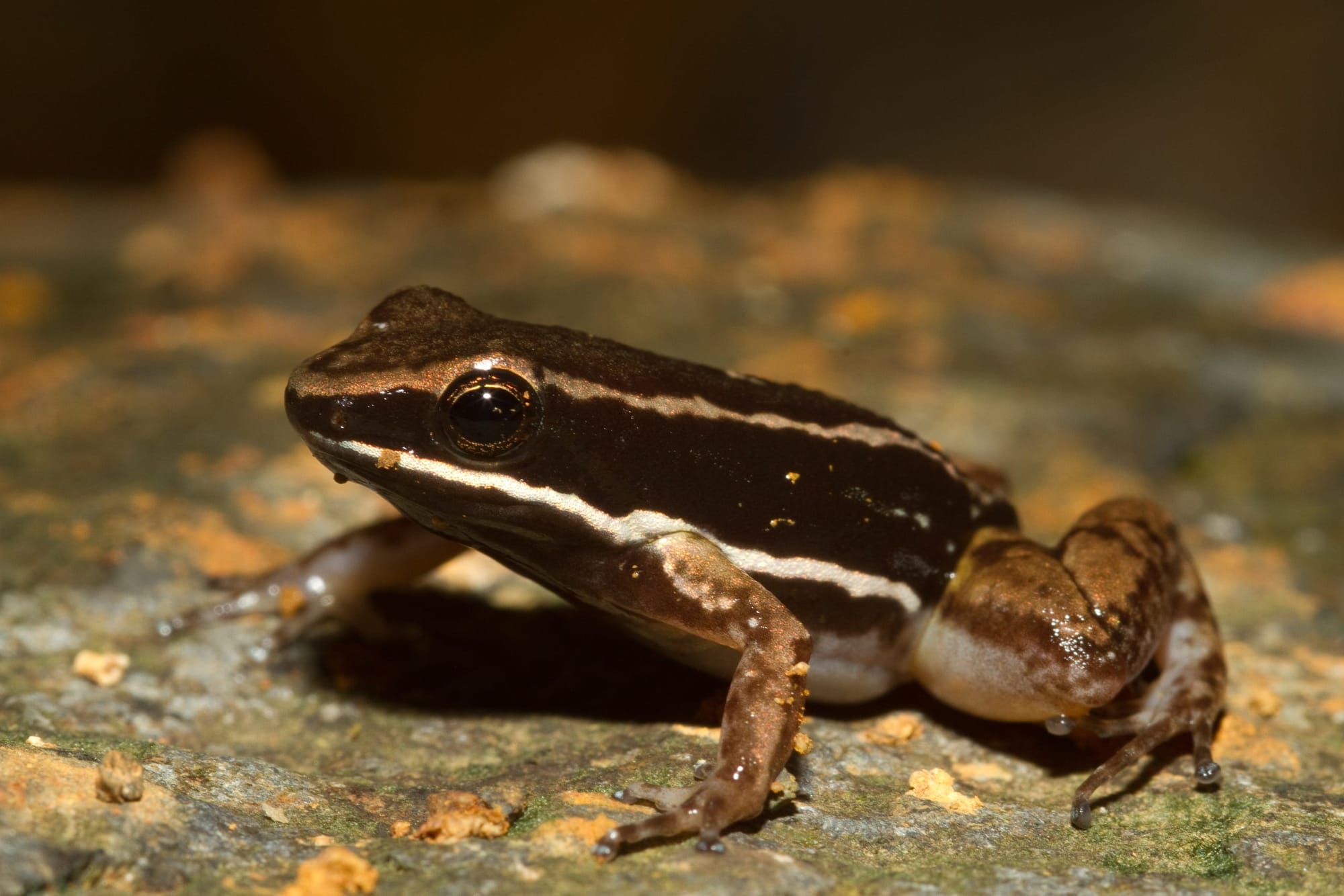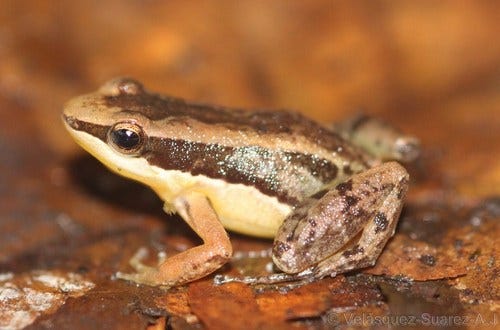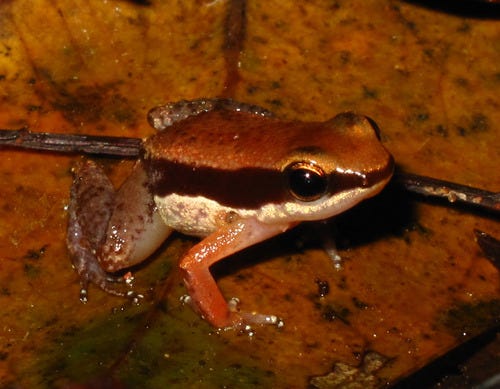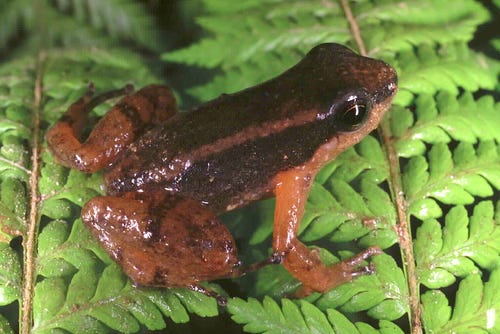
Before we dive into actually Threatened species, I felt that it would be interesting to take a brief look at the reasons why certain species are listed as Data Deficient. For this, we will be looking at the genus Allobates, a group of terrestrial rain forest frogs native to Central and South America. The adults tend to lay their eggs in leaf litter and then carry the hatched tadpoles to water on their backs. There are a total of 48 species in this genus, but they go largely unnoticed compared to their more brightly colored cousins, the poison dart frogs.
Of the species in Allobates that have been assessed by the IUCN, they range in status from Least Concern, such as Allobates talamancae pictured above, to the Critically Endangered Allobates juanii below, which has only been found in a single botanical garden in Colombia surrounded by urban areas.

However, a total of 21 species, nearly half of the genus, are currently categorized as Data Deficient. The reasons for this classification vary for each individual species, but there are commonalities between them. For example, 10 of the Data Deficient species are listed as such because there is some dispute about the validity of their taxonomic status. This means that there is still some disagreement within the scientific community about whether some species, such as Allobates sumtuosus below, are in fact separate and distinct species of their own and not a variation in appearance of an already classified species.

Even if the taxonomic dispute were resolved for those 10 species, many of them would still be considered Data Deficient because they also share other limitations for classification with the remaining species. For example, they mainly have not been described in published scientific literature until recently, so there has been insufficient time to collect the data required to list them in the categories outlined last week. This also holds true for an additional 7 species not under dispute, including Allobates alessandroi below.

There are also species that are not recent discoveries but have no current data on their population status or the size of their native range. Many of the 21 species are only known from a handful of specimens, making classification of their conservation status difficult. With such scant data, it is often not possible to even understand the ecological necessities for a species, and thus what would be needed for a comprehensive conservation plan.
Overall, the reason why nearly half of the species in the Allobates genus are listed as Data Deficient has much to do with the overall characteristics of these frogs. They are small, usually not much more than one inch long, and very drab in color. This cryptic coloration is excellent as a method of predator avoidance, but it also makes them difficult to encounter for the scientists studying them. Each species may only have been encountered in a handful of places, some of which are rather remote and inaccessible.
Going beyond this one small group of frogs, the reasons why a species cannot be categorized by the IUCN often come down to the same factors of time, size, accessibility, and similarities to other species. One of the reasons why I want us to think about these species is to remember the amount of information required to classify the species we look at going forward. Data will always be imperfect (such is the nature of science, especially field biology), but understand that the different classifications of Threatened species are not arbitrary. If they were, several of the Allobates species mentioned here could very well be listed as Vulnerable or Endangered. Instead, the honest assessment is that more data are required.
Next week, we’ll jump into the shallow end of the pool, so to speak, and look at the category of Near Threatened, those species that do not yet meet the criteria for such status, but are likely to do so in the near future. Then, we’ll continue forward through the more severe categories as the season goes along.